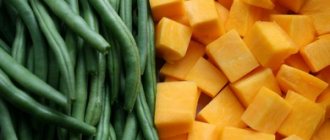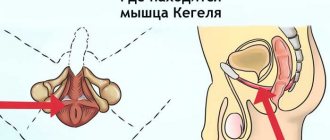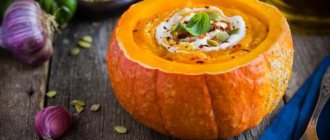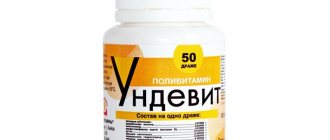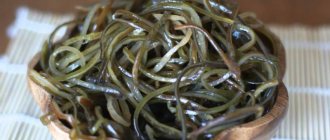Botanical description and range of the common pumpkin
The common pumpkin belongs to the Cucurbitaceae family, the genus Pumpkin. In Latin - Cucurbita pepo. It was described, like many other plants, by the famous Swedish botanist Carl Linnaeus. This family is quite large; pumpkin has many edible and well-known relatives: cucumbers, watermelons, melons and many more exotic vegetables and even fruits. Zucchini and squash are varieties of this type of pumpkin.
This plant is annual and herbaceous, has great growth vigor and power. What other vegetable can boast fruits of this size and weight? To feed the huge rough leaves and fruits, an equally powerful root system is required. It consists not only of a strong taproot that goes deep, most often 3 meters or more, into the ground. It has a considerable number of branches, which can be up to 12 m long. Such a mass of roots allows the plant to successfully withstand weather adversity and grow safely in both dry and rainy weather.
The stems, pentagonal in cross-section, spread along the ground. This plant cannot wrap itself around a support, but under favorable conditions it manages to climb quite high, since the stems reach a length of up to 10 m. And branched or simple tendrils help it in this. Clinging to a support, they allow the plant to reach a fairly large height. There are compact varieties of this vegetable that branch slightly and do not take up much space when grown.
The leaves of this garden lady are large, matching the fruits; depending on the variety, they can be lobed or palmately dissected. Varieties with heavily dissected leaves are considered more resistant to lack of moisture. Leaf petioles are long. Like the stems, they have pubescence.
The flowers are large yellow with a fused five-lobed corolla. On the same plant there are both male and female flowers, and the female flowers have short pedicels, and the male ones have long pedicels. The number of male flowers exceeds the number of female flowers by 25 times. Only bush varieties have only slightly fewer female flowers than male ones. The arrangement of their flowers also differs. Female flowers are often located on the lateral shoots, while male flowers are often located on the main stem. The male flowers bloom first, approximately 50 days after germination. Female flowers do this a week later. Pollination is cross, pollinators are bees and bumblebees, pumpkins and ants are pollinated.
The fruit is pumpkin. It is usually covered with a hard crust, which allows the pumpkins to be stored for a long time. The color and size of pumpkins depends on the variety. Inside the pumpkin there are quite large seeds, 1 to 3 cm long, covered with two shells: dense, white on the outside and filmy, greenish-gray inside. There are varieties in which the seeds do not have an outer shell, the so-called gymnosperms.
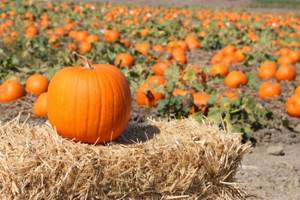
Pumpkin is a southern plant, so it requires warmth and sun to grow successfully. On poor soils, this plant will grow poorly or not at all. She loves humus-rich, non-acidic soils that warm up quickly.
Wild species of this vegetable are found in the Southern United States, Mexico, Honduras and Guatemala. There is evidence that some of its species were grown in China in ancient times. But the common pumpkin was introduced into culture by the Indians. And this happened five thousand years BC. This is exactly the age of pumpkin seeds found in Mexican caves. This vegetable came to Europe in the 16th century, quickly fell in love and very soon found itself in Russia. The ease of cultivation and long shelf life appealed to the peasants. They began to grow it in almost every peasant farm. Now this vegetable can be found everywhere. By the way, Russia ranks 3rd in the world in its cultivation.
Chemical composition and calorie content of pumpkin
92% of this vegetable is water. But the remaining 8% are distinguished by their rich composition. Namely :
- Sahara;
- starch;
- various vitamins, including carotene; there is less of it in carrots;
- enzymes;
- cellulose;
- many microelements, including such valuable ones as potassium, iron and zinc;
- proteins;
- pectins.
The leaves of this vegetable contain a lot of vitamin C - 620 mg. The seeds are also rich in nutrients:
- tasty and healthy oil with a high content of unsaturated fatty acids;
- amino acids;
- phytosterols;
- carotene and carotenoids;
- essential oil.
This composition allows this vegetable to be not only useful, but also a medicinal product. At the same time, in terms of calorie content, which is only 26 kcal per 100 g of product, it can be considered dietary.
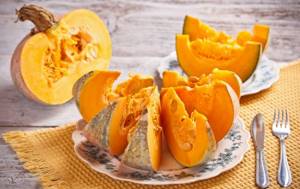
Contraindications
Contraindications for pumpkin for gastritis relate to a disease that occurs against a background of low acidity. In this case, you should definitely consult your doctor about consuming the vegetable. You should not eat pumpkin in its pure form during an exacerbation of gastritis. The only exception is puree soup, which allows you to quickly stabilize the condition.
You should avoid vegetables and dishes made from them if you have allergic reactions. Increased flatulence and other discomfort indicate individual intolerance to the product. With such manifestations, the vegetable should also be excluded from the menu.
Pumpkin and dishes made from it must be included in the menu of a patient suffering from gastritis. It will saturate the body with useful substances, which will strengthen it and allow it to more successfully resist the disease. But at the same time, the frequency of use and the volume of permissible portions must be agreed with the doctor.
Medicinal and beneficial properties of pumpkin
You can prepare a large number of delicious dishes from this vegetable, from appetizers to desserts. There are almost no medical contraindications for its use. It can be eaten even with diseases of the stomach and intestines. It can also successfully cure many different diseases.
Pumpkin pulp
It contains many antioxidants , the role of which is extremely important in the body. By binding free radicals, they are an excellent remedy against cancer and strengthen the cardiovascular system. Potassium also helps improve her condition.
Vitamin A, which is obtained in the human body from beta-carotene, not only improves vision, but also strengthens the immune system. Thanks to it, skin, hair and bones become healthier. And for various skin lesions, such as burns, inflammation, it promotes their healing. In this case, pumpkin pulp is used externally in the form of a paste.
Pumpkin juice treats ulcers, and the pulp itself is good for constipation and intestinal inflammation. By taking the juice, you can reduce the acidity of gastric juice, which means getting rid of heartburn. It will also help with insomnia and can serve as a sedative. Prostatitis is treated with juice and seeds.
Pumpkin pulp will help remove swelling, both cardiac and kidney origin . If you eat it just boiled a couple of times a day, it will even help get rid of tuberculosis. It is a good remedy for toxicosis in pregnant women. In older people, it prevents atherosclerosis. A sufficiently large amount of fluoride allows it to be a preventative against caries.
As a dietary product, it is indicated for consumption in the form of a variety of dishes for people of different ages.
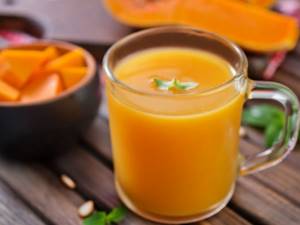
Pumpkin tails
Of course, no one will eat them, they are too hard, but as a medicine they are quite effective. Helps with toothache, pyelonephritis, cystitis, salt deposits in joints.
Pumpkin seeds
Their benefits are very great. They are an excellent anthelmintic against pinworms. Even children can be treated in this way. The list of problems that regular intake of pumpkin seeds can help you cope with is very long: joint problems, high levels of bad cholesterol, high sugar levels, poor blood clotting, hypertension, decreased immunity, prostatitis, depression, poor sleep and much more.
Is it possible to eat pumpkin if you have gastritis?
All gastroenterologists recommend including pumpkin dishes in the menu for gastritis. The vegetable is not capable of injuring the digestive organ and overloading it. Cooked vegetable dishes have the following effects:
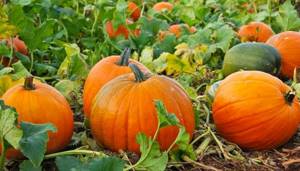
- Normalizes the motility of the digestive organ.
- Reduce the inflammatory process.
- Prevents constipation.
- Fight harmful microorganisms.
Pumpkin and gastritis are compatible concepts. But, despite this, when including a vegetable in the menu, you need to observe the measure. You can eat pumpkin for gastritis with high acidity, as it can neutralize the effect of hydrochloric acid. Vegetable dishes can minimize the risks of exacerbation and significantly alleviate the patient’s condition.
For gastritis with low acidity, pumpkin dishes should be included in the menu with caution. But you shouldn’t completely abandon them. In a specific period with this form of gastritis, only the doctor decides whether or not to eat pumpkin.
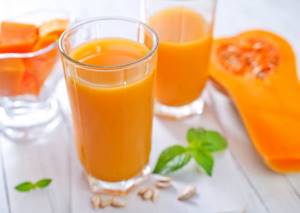
Advice! In any case, with reduced secretion, small portions of dishes in the diet should appear occasionally.
pumpkin juice
Pumpkin juice for gastritis can be drunk only if the disease occurs against a background of increased acidity. In this case, the drink can be considered medicinal, since it is not capable of harming the gastric mucosa. Thanks to it, the effect of hydrochloric acid is neutralized, which significantly improves the patient’s condition in a short time.
It is important to start drinking pumpkin juice in small portions. This will allow you to determine whether there are allergic reactions to the product or intolerance to it. This may be indicated by:
- Increased flatulence.
- Bitterness in the mouth.
- Stomach upset.
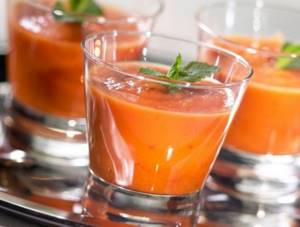
If no side effects appear within a few days, it is recommended to drink a glass of the drink before meals for 10 days, and then take a break for several weeks. This scheme will improve digestion and saturate the body with useful substances.
Pumpkin seeds
Raw pumpkin seeds contain many beneficial substances. They have a balanced composition and contribute to:
- Normalization of cholesterol levels.
- Stabilization of glucose levels.
- Removing heavy salts from the body.
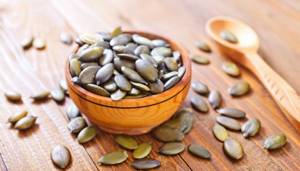
Despite this, pumpkin seeds are contraindicated for gastritis. When asked whether it is possible to eat pumpkin seeds if you have a disease of the digestive organ, gastroenterologists always give a negative answer. This is explained by the fact that solid particles of seeds can injure the inflamed mucous membrane and cause an exacerbation.
Advice! Pumpkin seeds can be used during remission as a natural laxative to normalize the digestion process.
What are the benefits of pumpkin (video)
Pumpkin pulp
- For all of the above diseases, you can eat it a couple of times a day, boiled or in the form of porridge. It is enough to consume 150-300 g of pulp per day. But this needs to be done regularly and for a long time.
- For some diseases, raw pumpkin pulp is used. Raw pumpkin pulp is good for people who have been treated with antibiotics for a long time, received radiation therapy sessions, with vitamin deficiency, or atherosclerosis. You need to grate it and eat a glass a couple of times a day immediately before meals.
- Slices of raw pumpkin will help with acne and headaches; in the first case, they are rubbed on the skin several times a day; in the second, they are simply applied to the sore spot.
- To treat anemia, it is enough to eat 3/4 cup of raw pumpkin three times a day with meals.
- Compresses made from pumpkin pulp will help with burns and mastopathy.
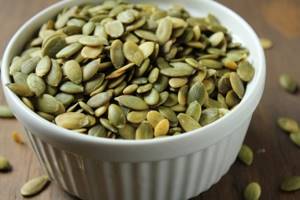
Pumpkin juice
- For a good night's sleep, drink 1/2 glass of juice with a teaspoon of honey before bed.
- If you have a cold, drink juice as much as you can throughout the day.
- For urolithiasis, you need to take 1/3 glass of juice before meals three times a day.
- If you have problems with the kidneys or liver, it is enough to drink 1/2 glass of pumpkin juice half an hour before meals.
- For high blood pressure and constipation, 1/4 glass of juice is enough, but 20 minutes before meals three times a day.
- The initial stage of prostate adenoma and prostatitis can be well treated with pumpkin juice, which is taken 1/2 cup per 30 minutes. You need to drink it 3 to 4 times a day.
- Pumpkin juice lotions heal burns well.
Pumpkin seeds
They are used as an anthelmintic for pinworms and tapeworms. The seeds need to be peeled, preserving the inner green shell, crushed and mixed with milk, honey or jam and eaten lying down on an empty stomach gradually in small portions. For adults, you need 300 g of seeds; for children, their quantity is reduced according to age. The day before and after the appointment, you need to take a laxative and give an enema.
Pumpkin seeds are a good remedy for motion sickness on an airplane. They also have a diuretic effect.
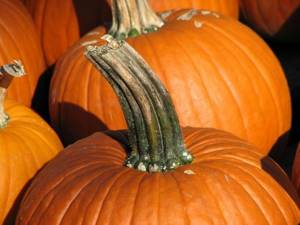
Pumpkin tails
For toothache, pour boiling water over the planed pumpkin tail. After infusion, use for rinsing while warm.
To treat pyelonephritis, 5 tails are poured with a liter of water and boiled until the volume is halved over low heat. A day later, the broth is drunk and a new portion is prepared. Drink until complete recovery. This treatment also helps with cystitis.
As a choleretic and diuretic, take a decoction of 20 g of fresh tails and 2 glasses of water. You need to boil for 20 minutes. Drink the decoction throughout the day.
Benefits of pumpkin juice
For those people who do not want to eat raw pulp, you can offer another option for using a vegetable untouched by heat treatment - making juice. To improve the taste, add citrus juice or any other fruits and vegetables to the drink. You can sweeten it with honey.
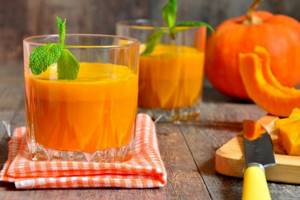
If you drink three-quarters of a glass of pumpkin juice before meals several times a week, the liver will be cleansed and strengthened, the immune system will improve, and the entire body will rejuvenate.
Pumpkin juice is indispensable for the following health problems:
- anemia;
- diabetes;
- poor functioning of the cardiovascular system;
- overweight;
- kidney diseases and nephrolithiasis.
It is not recommended to drink juice if you have gastritis with low acidity or diarrhea.
Pumpkin pulp in dietary nutrition
Thanks to its unique composition, pumpkin pulp has no contraindications for use. On the contrary, it is very useful for constipation, inflammation of the colon and duodenum, liver diseases, for weakened people, and in old age. It can be boiled, baked, made into porridge, or stuffed. Its low calorie content allows those who want to lose weight to eat pumpkin.
Vitamin T is found in pumpkin pulp, which helps digest heavy meat foods. Therefore, it can be used to prepare a healthy side dish for fatty meat.
Pumpkin oil contains many vitamins and unsaturated fatty acids. Tasty and healthy, it is well suited for dressing vegetable salads.
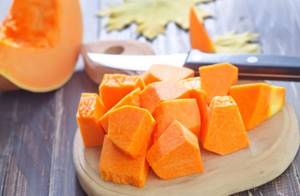
Pumpkin varieties and the right choice of fruits ↑
It should be noted that there are quite a few varieties of pumpkin. Some of them are used for food, and some, the so-called technical varieties, are used to make vessels, containers, and various musical instruments.
The most common and healthiest pumpkin is the common table variety. When choosing a vegetable at the market, carefully examine the skin of the fruit, which is dense, smooth and without damage. If you want your pumpkin to contain a lot of carotene, choose one with the most vibrant flesh.
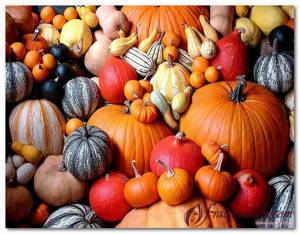
A ripe vegetable will have a dry and dark tail. This must be taken into account, because if the pumpkin is not ripe, it will be completely tasteless, and if it is overripe, it will be doughy and fibrous. At the same time, in a good vegetable, the seeds should not have any odor and should not be wet or cracked.
The use of pumpkin in cosmetology
Pumpkin is an excellent remedy for skin rejuvenation. At the same time, pumpkin increases its moisture content. It is used in the form of masks.
Oily skin
You need to mix 3 tablespoons of boiled chopped pumpkin, a teaspoon of honey and an egg yolk. Keep it on for 20 minutes, after which you need to wash your face.
Dry skin
Mix 2 tablespoons of chopped boiled pumpkin with one tablespoon of olive oil. Then proceed as in the previous recipe.
Toning mask
- A couple of times a week, boiled chopped pumpkin is applied in a thin layer to the skin of the face. After 15 minutes you can wash your face.
- You can soak a cotton napkin in fresh pumpkin juice and apply it to your face for 15-20 minutes.
- It is useful to wipe aging skin with pumpkin seed oil. It helps heal burns, cuts and wounds.
Pumpkin recipes
Our heroine today is an ambiguous vegetable. Not everyone loves her, some cannot get along with her, so she is not a frequent guest on our tables. But let’s move on to our recipes and perhaps many people’s opinion about pumpkin will change...
Baked pumpkin slices
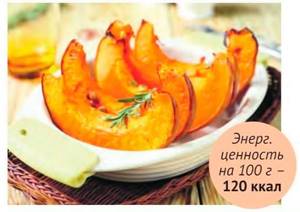
Ingredients for 4 servings:
- 300 g pumpkin
- 50 g honey
- 2 tbsp. spoons of soy sauce
- 1 teaspoon balsamic vinegar
- 2 tbsp. spoons of olive oil
Preparation:
Without peeling, cut the pumpkin into thin long slices. Grease both sides with olive oil and bake in the oven at 180 degrees for 15-20 minutes.
Melt the honey, mix it with soy sauce and pour over the finished slices. Then drizzle with balsamic vinegar.
Serve as a snack with cheeses and nuts.
Stuffed pumpkin
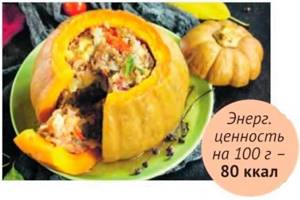
Ingredients for 6 servings:
- 1 medium pumpkin
- 300 g minced turkey
- 2 potatoes
- 1 carrot
- 1 onion
- 2 tbsp. spoons of tomato paste
- 100 g sour cream
- salt, pepper to taste
Preparation:
Wash the pumpkin thoroughly. Cut off the top and cut out the core. Grate the carrots and chop the onion as desired. Peel the potatoes and cut into medium cubes.
Mix minced meat, potatoes, carrots and onions, salt and pepper to taste. Stuff the pumpkin with this minced meat. Mix tomato paste and sour cream, add a little salt and pour this sauce over the filling.
Cover with the cut top and place in the oven preheated to 200 degrees. After 20 minutes, reduce to 160-180 degrees and simmer until the minced meat is ready. You can cover the top with foil to prevent it from burning.
Millet porridge with pumpkin (recipe for a slow cooker)
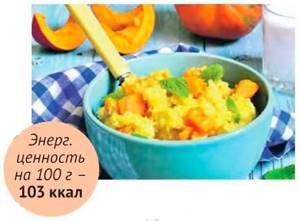
Ingredients for 4 servings:
- 1 cup millet
- 2 cups grated pumpkin pulp
- 4 glasses of milk
- 3-4 tbsp. spoons of sugar
- 2 pinches of salt
- 0.5 teaspoons each of cinnamon and ground nutmeg
- 50 g butter
Preparation:
Pour boiling water over the millet and rinse thoroughly in warm water.
Place the grated or finely chopped pumpkin and millet into a multicooker bowl, pour in milk, add salt and sugar, and spices.
Turn on the “Porridge” program (in some models it is called “Krupa”) for half an hour. After finishing cooking, add butter.
Pumpkin salad for blood pressure
Ingredients for 2 servings:
- 250-300 g pumpkin
- 50 g raisins
- 50 g sprouted wheat
- 2 tbsp. spoons of honey
Preparation:
Pour boiling water over the raisins, leave for an hour, then rinse and chop if they are large.
Wash the pumpkin, peel and grate on a coarse grater.
Grind the sprouted wheat in a blender.
Mix all ingredients, add honey.
Eat salad in the morning on an empty stomach, before the main meal.
Bon appetit!
Try preparing pumpkin dishes using these recipes - and this product will surely take its rightful place in your culinary arsenal.
All the best to you, stay healthy and see you on the pages of my blog!
Contraindications and harm of pumpkin
Since pumpkin reduces the acidity of gastric juice, people with low acidity should not consume it. You should not use it if the acid-base balance in the body is disturbed. If blood sugar is high, pumpkin should be eaten boiled or baked, but not raw. After eating the seeds, you must rinse your mouth so that the acids they contain do not damage your teeth.
Pumpkin is a vegetable that should be on the table in every home. Its beneficial properties can hardly be overestimated. It’s probably not often that an effective medicine can also be so tasty.
